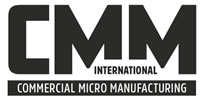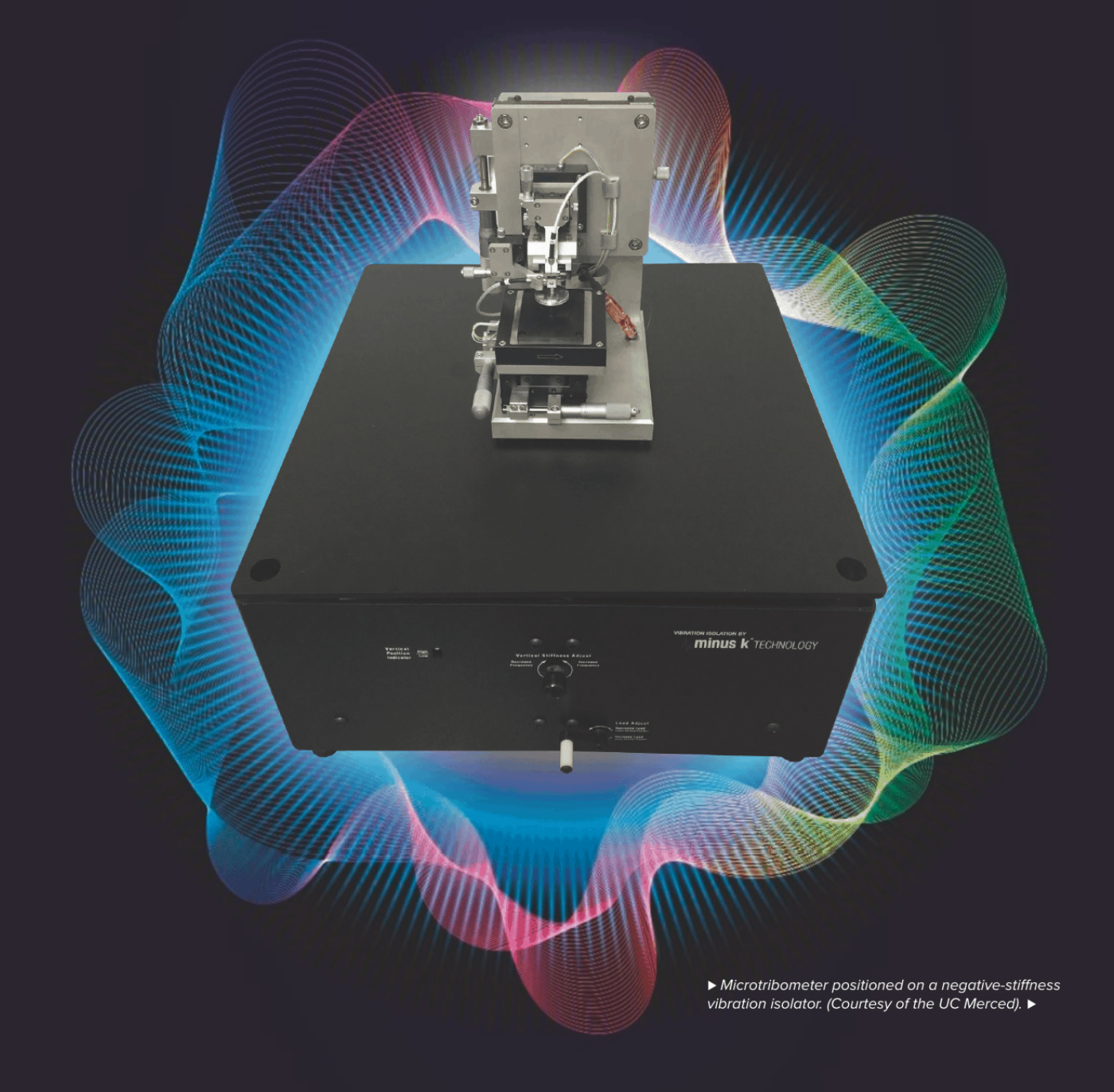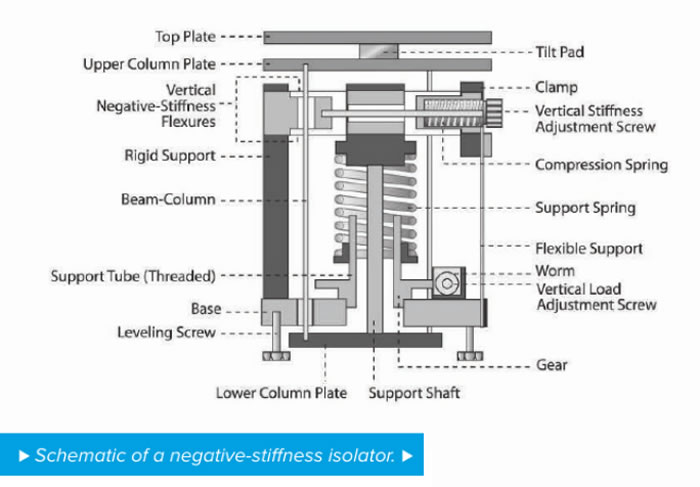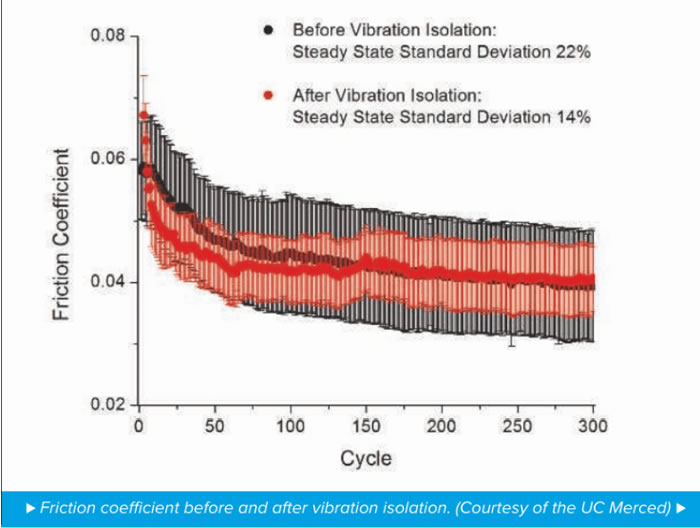
Commercial Micro Manufacturing - February 2022
University of California Merced relies on negative stiffness vibration isolator from Minus K Technology to conduct accurate research into microscale friction
Case Study
 Welcome to the first issue of 2022, which, it goes without saying, we all hope will be a significantly more positive year than the previous two. CMM has got off to a good start, with articles expected from new as well as old faces in the coming months, and I like to think this Is a sign of our continuance on the road back to normality.
Welcome to the first issue of 2022, which, it goes without saying, we all hope will be a significantly more positive year than the previous two. CMM has got off to a good start, with articles expected from new as well as old faces in the coming months, and I like to think this Is a sign of our continuance on the road back to normality.
First I thought I might highlight a case study on how a negative-stiffness vibration isolator from Minus-K Technology has enabled the School of Engineering at the University of California Merced (UC Merced) to isolate environmental vibrations and thus obtain precision microscale or, more specifically, micronewton friction measurements The school has been using a linear-reciprocating microtribometer to conduct valuable research into friction and wear on different material surfaces subjected to various loading and sliding speed conditions. In order to acquire measurements at (he micron level the microtribometer needs to be isolated from environmental vibrations, particularly very low hertz vibrations, these can be due to many factors from equipment and people inside the building to vehicles and construction noise outside of it.
The negative-stiffness vibration isolator replaced the vibration isolator the school initially used for its research but that proved inadequate. This is because the microtribometer demanded greater vibration Isolation for the measurement of friction in micronewtons. The ability of the negative-stiffness vibration isolator 1o achieve a significantly higher level of vibration isolation means The researchers can be confident that the friction response measured is attributable to the microtribometer's sliding contact. Moreover, they are able to study materials that have much lower frictions.
Moving on, an article from Mandy Gebhardt, Arved Kampe and Markus Muller at 3D-Micromac discusses the use of laser lift-off (LLO} and laser-Induced forward transfer (LIFT) processes for producing rnicroLEDs (µLEDs). Stumbling blocks for the mass manufacture of µLED displays include the separation of µLED chips from the sapphire growth substrate and precise transfer of those chips to the display substrate at sufficiently high speeds and low cost, since conventional processes fall short on these counts.
The LLO and LIFT processes address µLED chip separation and transference, respectively, and afford the required higher speeds and lower cost Other cited advantages of these processes are that LLO eliminates the risk of damage to the sapphire growth substrate, allowing it to be reused, and that LIFT allows for high-accuracy placement of the chips on the display substrate.
And so concludes my contribution in this issue. Should you wish to share your thoughts on any of the content, please email me at the address below. Elizabeth Valero, editor: elizabeth@cmmmagazine.com
.

The School of Engineering at the University of California Merced (UC Merced) has been engaged In research focusing on applications of microscale friction measurements to better understand fundamental mechanisms underlying tribological phenomena. A critical end fundamental component of the school's research Is the Isolation of environmental vibrations utilizing a negative-stiffness vibration isolator from Minus K Technology which has enabled precision measurements of friction at micronewton magnitudes.
Whenever two surfaces are moving in contact with each other their behavior is influenced by friction. Smooth surfaces, even those polished lo a mirror finish, are not truly smooth on scales. They are rough, with sharp or rugged projections referred to as asperities.
Initially, the surfaces only touch at a few of these asperity points which cover only a very small portion of the surface area. Friction and wear originate at these points, so understanding their behavior becomes important when studying materials in contact.
The measurement of this fractional force between two surfaces is undertaken using a microtriborneter This instrument measures quantities, such as coefficient of friction and friction force between the two surfaces that are in contact These measurements can relate to a number of types of important properties of mechanical components, including energy efficiency.
The basic operation of a microtribometer involves a flat of spherical surface that is moved repetitively across the face of another material. An exact load is applied to the moving part for the duration of the test. Equipment and methods used to examine the surfaces before and after sliding include optical microscopes, scanning electron microscopes, optical interferometers and mechanical roughness testers. The final measurements show the wear on the material end are often used to determine its strength and longevity.
The need for vibration isolation
Microtribometer measurements at the micron level require isolation from ambient environmental vibrations, particularly very low hertz vibrations. Isolating a laboratory s sensitive instrumentation against low-frequency vibrations has become increasingly more vital to maintaining imaging quality and data Integrity.
Low-hertz vibrations can be caused by a multitude of factors. Every structure is transmitting noise. Within the building itself, the heating end ventilation system, fans, pumps and elevators are just some of the mechanical devices that create vibration. Movement of people within the building is another source of vibrations Depending on how far away the lab equipment Is from these vibration sources, and where in the structure the equipment is located, whether on the third floor or in the basement, for example, will determine how strongly the instrumentation will be influenced.
External to the building, a lab's research can be influenced by vibrations from vehicle movement, nearby construction and noise from aircraft, even wind and other weather conditions can cause movement of the structure.
Microtribometry research at UC Merced, School of Engineering
Utilizing a linear-reciprocating microtribometer to characterize different materials for their friction properties, the UC Merced's School of Engineering lab researches friction and wear on different materials under different loading and sliding speed conditions.
The microtribometer measures friction in the micronewton to millinewton range with loads on the same scale. A probe is employed, which slides back and forth over a flat substrate. The probe connects to a flexible cantilever.
Deflection of the cantilever in response to friction at the interface is detected by two capacitance probes, one for the horizontal and one for the vertical (normal) direction. The horizontal is the friction force, the force resisting sliding. The vertical is the force exerted downward. The measured displacements are correlated to friction and normal force using. The known force constant of the cantilever. The ratio of those two (the slope of the line) is the friction coefficient, which is the commonly reported measure of friction.
As put by Ashlie Martini, Ph D., associate professor at the UC Merced: "We do not measure force directly, but rather, we use capacitance probes to measure displacement, which is then converted to force." The capacitance probes are very sensitive, which enables the researchers to measure small differences in friction between one surface or set of conditions and another. However, this also means that the capacitance probes detect motion from other sources.
Professor Martini added: "We had been using an insufficient vibration isolator. Our microtribometer is relatively small and light, but it requires pretty significant vibration isolation to measure friction at small magnitudes without the noise being larger than the signal. Fully isolating the instrument from external vibrations ensures that the friction response being measured is indeed due to the sliding contact itself. This can enable the lab to measure materials that have much lower friction than what we have been capable of studying."
Negative-stiffness vibration isolation
To achieve a higher level of vibration isolation for its microtribometer, the UC Merced's School of Engineering installed a negative-stiffness vibration isolator from Minus K Technology, Negative-stiffness isolators employ a completely mechanical concept in low-frequency vibration isolation. They do not require electricity or compressed air. There are no motors, pumps or chambers, and no maintenance is required because there is nothing to wear out. They operate purely in a passive, mechanical mode.
Due to having very high vibration isolation efficiencies, particularly in the low frequencies, negative-stiffness vibration isolators enable vibration-sensitive instruments, such as microtribometers, to operate in severe low-vibration environments that would not be practical with top-performance air tables and other vibration-mitigation technologies.
Dr. David Platus, president of Minus K Technology explained: "In negative-stiffness vibration isolation, vertical-motion isolation is provided by a stiff spring that supports a weight load, combined with a negative-stiffness mechanism. The net vertical stiffness is made very low without affecting the static load-supporting capability of the spring. Beam-columns connected in series with the vertical-motion isolator provide horizontal-motion isolation. A beam-column behaves as a spring combined with a negative-stiffness mechanism. The result is a compact passive isolator, capable of very low vertical and horizontal natural frequencies and very high internal structural frequencies.”
Negative-stiffness isolators achieve a high level of isolation in multiple directions. They have the flexibility of custom tailoring resonant frequencies vertically to 0.5 Hz* and horizontally to 1.5 Hz (with some versions as low as 0.5 Hz horizontally).
These isolators resonate at 0.5 Hz. At this frequency, there is almost no energy present. It would be very unusual to find a significant vibration at 0.5 Hz. Vibrations with frequencies above 0.7 Hz (where negative-stiffness isolators begin isolating) are rapidly attenuated with increases in frequency. When adjusted to 0.5 Hz, negative-stiffness isolators achieve approximately 93 percent isolation efficiency at 2 Hz, 99 percent at 5 Hz and 99.7 percent at 10 Hz.
'Note that for an isolation system with a 0 5 Hz natural frequency, isolation begins at 0.7 Hz and improves with increase in the vibration frequency. The natural frequency is more commonly used to describe the system performance.
Improved performance at micron-scale magnitudes
When measuring friction at micron scales, noise levels need to be as small as possible, and the signal-to noise ratio needs to be as large as possible.
Professor Martini concluded: "In our microtribometer research, comparing our prior vibration isolation with negative-stiffness isolation, the friction between the samples tested decreases and reaches a standard value, as would be expected during a typical run in process. But when plotted for friction coefficient, the noise ratio is considerably smaller for the measurements taken after vibration isolation with negative-stiffness compared with our prior vibration isolation. This is a critical difference, which equates to higher accuracy in microtribometry."
University of California Merced, School of Engineering, engineering.ucrmerced.edu
Minus K Technology, www.minusk.com
|

